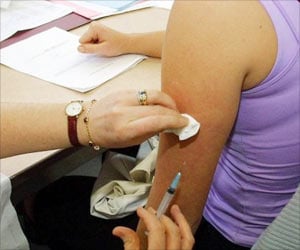HPV screening test might be a better cervical cancer detection tool than Pap smear test, and thereby the HPV test alone might be sufficient.
Highlights
- HPV screening test might be a better cervical cancer detecting tool than Pap Smear test
- HPV screen tests are more sensitive to cervical precancer, as it captures cancer causing Human Papilloma Virus
- US Preventive Services Task Force in its recent draft recommended either primary HPV testing every five years or the Pap test every three years for women but not both.
Despite more research into HPV and the introduction of preventive HPV vaccines, the screening will remain important and comprise many millions of tests annually for decades to come. But improved screening methods have also introduced some confusion, even controversy.
HPV testing is more sensitive than the Pap test for detecting precancer. The HPV test captures known cancer-causing viruses, but there are gynecologists who believe that there may be unknown cancer-causing viruses and so continue to do the Pap smear (plus HPV testing).
However, reports of rare HPV-negative, Pap-test-positive cancers are motivating the continued use of both tests (co-testing) despite increased testing costs.
An HPV test, in which doctors test a cervicovaginal specimen for the presence of the nucleic acids of carcinogenic types of HPV, is more sensitive than the Pap test (a microscopic examination of exfoliated cells) for detection of precancers.
In the US, an interim guidance issued by a committee of experts from several clinical societies recommended primary HPV testing every three years, the same as the Pap test.
Draft guidelines from the US Preventive Services Task Force recently recommended either primary HPV testing every five years or the Pap test every three years for women 30 to 64 and did not recommend co-testing.
The accumulated evidence supports the inclusion of HPV testing in screening; thus, the main choice moving forward is between co-testing and primary HPV testing alone.
Researchers were searching for realistic performance data to quantify the additional benefit of the Pap test component of co-testing, as the costs of intensive screening of all women using two screening tests are substantial.
In January 2003, just prior to US FDA approval of HPV and Pap test co-testing in mid-2003 and interim guidelines in 2004, Kaiser Permanente Northern California, a large integrated healthcare organization, introduced three-year co-testing in women aged 30 years and older. Kaiser Permanente has now screened over a million women by co-testing. This remains the most extensive experience of HPV testing incorporated into routine screening in the world.
Researchers here quantified the detection of cervical precancer and cancer by co-testing compared with HPV testing alone at Kaiser Permanente, where 1,208,710 women have undergone triennial cervical co-testing since 2003. Screening histories preceding cervical cancers (n=623) and precancers (n=5,369) were examined to assess the relative contribution of the Pap test and HPV test components in identifying cases.
The analysis found that HPV testing identified more women subsequently diagnosed with cancer and precancer than the Pap test. HPV testing was statistically significantly more likely to be positive for cancer at any time point, except within 12 months.
HPV-negative/ Pap test-positive results preceded only small fractions of cases of precancer (3.5%) and cancer (5.9%); these cancers were more likely to be regional or distant stage than other cases.
Given the rarity of cancers among screened women, the contribution of the Pap test to screening translated to earlier detection of at most five cases per million women per year. Two-thirds (67.9%) of women found to have cancer up to 10 years of follow-up at Kaiser Permanente were detected by the first co-test performed.
The researchers conclude that the added sensitivity of co-testing versus HPV alone for detection of treatable cancer affected extremely few women.
Reference
- Mark Schiffman, Walter K Kinney, Li C Cheung, Julia C Gage, Barbara Fetterman, Nancy E Poitras, Thomas S Lorey, Nicolas Wentzensen, Brian Befano, John Schussler, Hormuzd A Katki, Philip E Castle. Relative Performance of HPV and Cytology Components of Cotesting in Cervical Screening, Journal of the National Cancer Institute (2017).https://doi.org/10.1093/jnci/djx225
Source-Eurekalert















